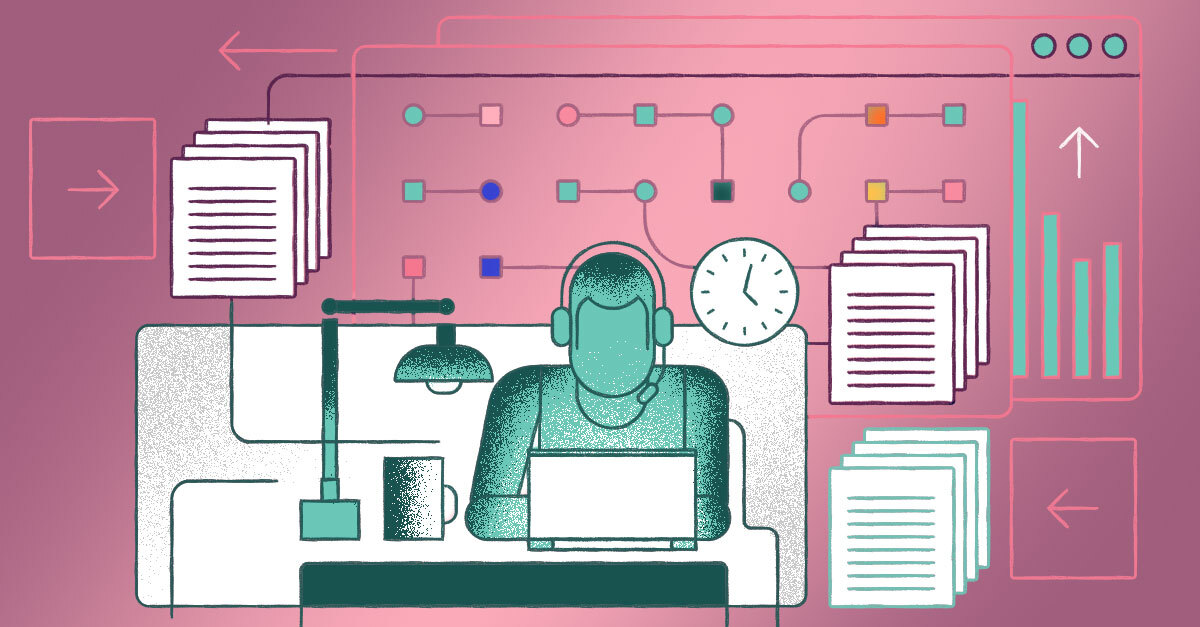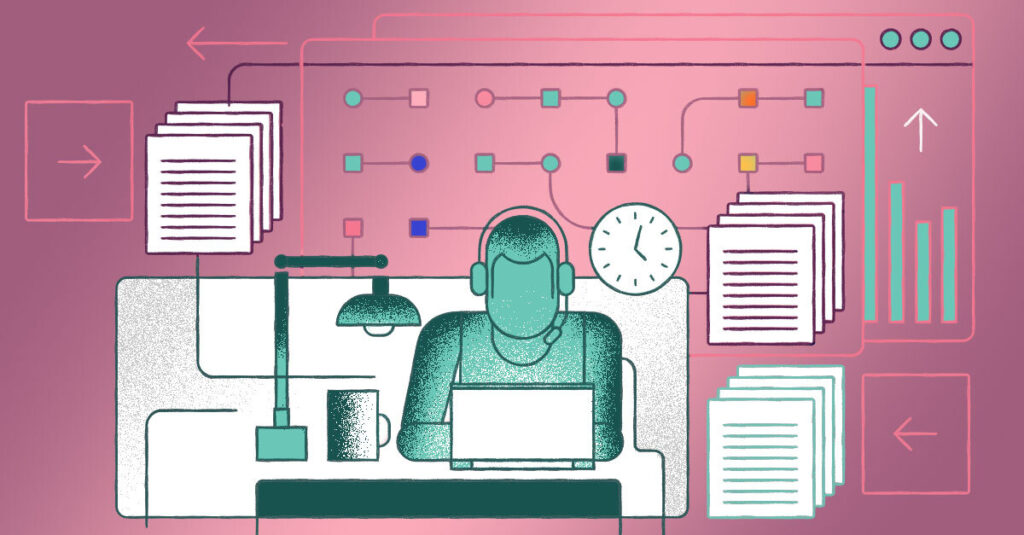
Today, it’s common for companies to employ a workforce of professionals who clock in from remote locations around the globe — whether the company itself is global or not. To successfully manage a distributed hybrid workforce, technology is key. From virtual meeting solutions to productivity and creativity tools, there’s been an influx of new technologies on the market to assist businesses in successfully implementing and managing a hybrid workflow.
Solutions that integrate artificial intelligence (AI) are particularly useful. Not only can AI tools streamline business processes across the globe, but they can also significantly improve the lives and productivity of hybrid employees. In some cases, AI can even replace many of the day-to-day tasks that traditionally fall under the purview of human employees.
From productivity hacks and language translation services, to scaling your business with AI-powered employees, AI is critical to the success of a hybrid workforce.
Find a better way to manage the day and prevent employee burnout
As companies move from in-office to hybrid work environments, it can be tough to replicate some age-old office traditions — like daily standups and water cooler conversations. To offset this, many companies fell fast and furious into the world of virtual meetings, scheduling calls and video chats for every conversation employees could ever wish to have. But meeting overload is extremely detrimental to productivity, and can even cause distress among employees.
Enter AI-powered productivity tools. Using AI, organizations can take time tracking and calendar management to the next level by analyzing what employees are spending their time doing, understanding how and when they prefer to schedule meetings, and preventing them from being overbooked. LG Electronics, USA even uses a tool to help optimize PTO and decrease employee burnout. Using AI-powered insights, the company knows when to prompt employees to take time off, and can surface relevant travel deals and activity discounts to help employees make the most of their time.
Remove language barriers when hiring talent
As hybrid teams take hold, more organizations of all sizes will hire talent located outside the city — or country — in which their headquarters is located. For smaller companies that haven’t previously gone global in their operations, this can be tricky. A global workforce means that employees may speak, and prefer to learn, in a variety of different languages. Native translations of everything from training materials to day-to-day conversations between employees in different countries will be key to aid communication and productivity across the workforce.
AI-powered tools can augment the work of native language speakers and translators to streamline the translation of resources across global teams at lightning speed. For internal communications between employees in different countries, companies can replicate what’s already working in the customer service functions at global organizations. Microsoft, for example, uses AI to help customer service agents communicate with customers in 76 different languages. AI tools combine native language and cultural nuance to provide quality translations that help people communicate what they mean to say, and how they mean to say it. Seamless communication between employees around the world is possible, and AI can help any company get there.
Let humans focus on what’s most important
AI also offers an amazing opportunity to help humans focus on the most important priorities at hand by automating routine tasks. The burden on employees in the sales or customer service functions at any organization can be lifted by AI chatbots that weed through prospect communications and implement self-service tools where possible. This frees up valuable employee time to focus on higher value and higher paying skills, which is an asset to your company and a relief for employees — especially during surges where teams must scale operations quickly.
In some cases, full AI “employees” may be the answer to help a hybrid organization scale in certain areas. Swedish bank SEB uses a digital assistant named Amelia to handle IT service desk support for its 15,000 employees. The AI assistant can book meetings, reset passwords and answer frequently asked questions. The benefit? SEB’s internal IT team can now focus fully on other areas of operational success. While we may be a long way away from robots taking over human jobs, AI certainly offers an interesting avenue toward restructuring the job description for certain functions.
Embrace AI as hybrid takes hold
From small businesses to global organizations, AI has the potential to change the way the hybrid workforce functions. In order to remain competitive in a hybrid world, companies need to focus on increasing remote worker productivity, hiring the best talent — regardless of native language — and giving employees the freedom to focus on high value tasks. AI can solve all of those challenges and more. And with the influx of AI powered technology hitting the market, cost is less prohibitive and the barrier to entry is lower than ever before. Let the AI revolution in the hybrid workforce begin.












